Welcome to “9 Sustainable Home Decor Ideas,” where the art of decorating meets the science of sustainability. Whether you’re just beginning your interior design journey or are a seasoned decorator, this guide offers a treasure trove of inspiration and practical solutions that promise to invigorate your living spaces while caring for our planet.
Discover how the magic of sustainable design can transform your home into a sanctuary that reflects your values and style. By integrating eco-friendly techniques and materials, you’ll not only enhance the beauty and functionality of your space but also contribute to a healthier environment.
Each idea in this guide is carefully crafted to empower you with the confidence to make meaningful changes, ensuring your home is both stylish and sustainable. Get ready to experience the joy of creating a home that is as kind to the Earth as it is captivating to the eye.
Choose Reclaimed Wood Furniture
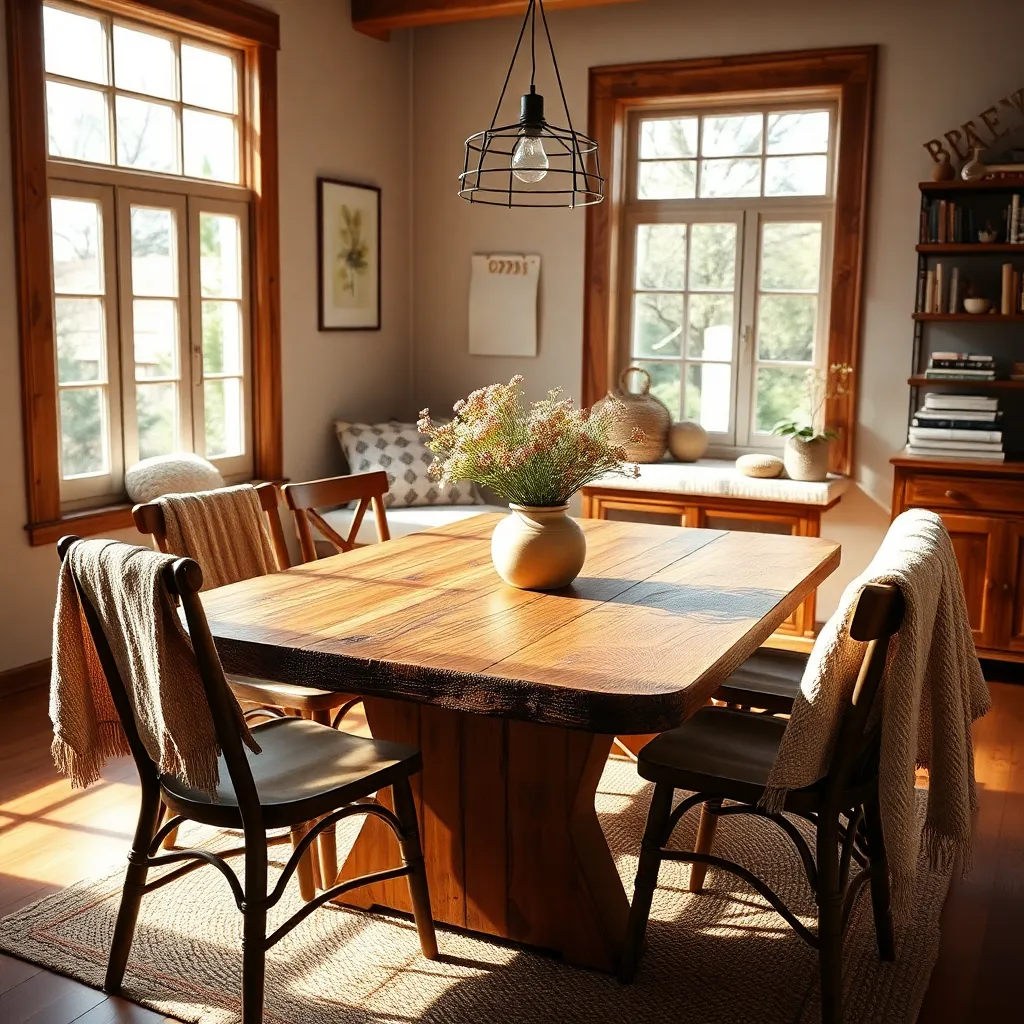
Choosing reclaimed wood furniture is an excellent way to incorporate sustainability into your home decor while adding unique character. Opt for pieces crafted from timber salvaged from old barns, factories, or warehouses, as they often have a rich history and distinct patina that modern materials cannot replicate.
To effectively integrate reclaimed wood furniture, start by selecting a statement piece, such as a dining table or coffee table, as these are focal points in most rooms. Pair these with neutral color palettes—think whites, beiges, or soft grays—to allow the natural textures and tones of the wood to stand out beautifully.
Consider the placement of your reclaimed wood furniture to enhance its impact. Placing a reclaimed wood bench in the entryway not only serves as a functional shoe-changing area but also sets a welcoming tone with its rustic charm.
For those looking to add a modern twist, combine reclaimed wood with metal accents. A table with a reclaimed wood top and sleek metal legs creates a stunning contrast that is both industrial and elegant, suitable for a variety of home styles.
Opt for Organic Cotton Textiles
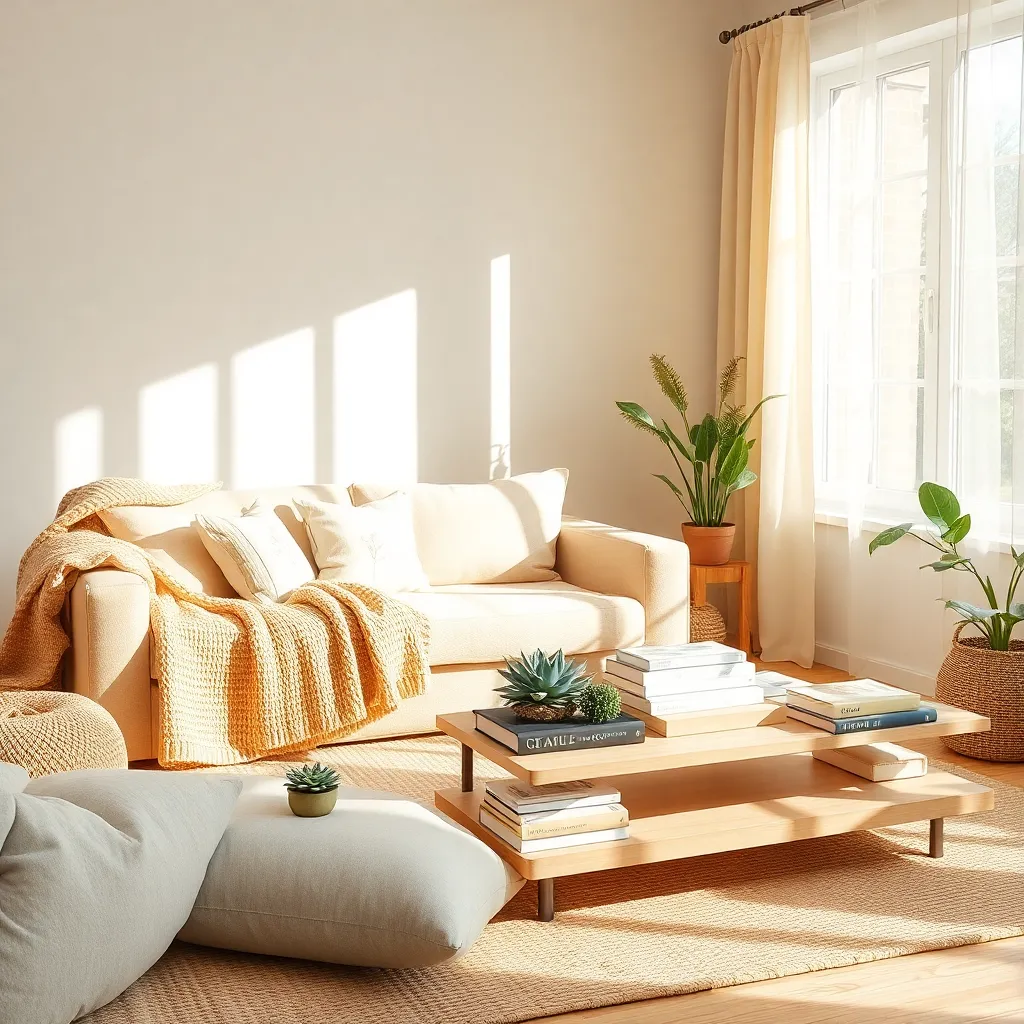
For a touch of sustainability and comfort, opt for organic cotton textiles in your home decor. These textiles are not only environmentally friendly but also incredibly soft, making them ideal for items like bed linens, curtains, and throw pillows.
Incorporate organic cotton in neutral tones to create a serene and calming environment. Pairing these with natural wood elements can enhance the earthy vibe, perfect for a restful bedroom or living space.
For those ready to experiment, mix organic cotton textiles with bold patterns or vibrant colors. This approach can add a pop of personality to any room, while still maintaining a commitment to sustainable materials.
Consider layering different textures of organic cotton for added depth and interest. Combine a chunky knit throw with smooth cotton sheets or a woven cotton rug to create a visually appealing and cozy atmosphere.
Incorporate Recycled Glass Accents
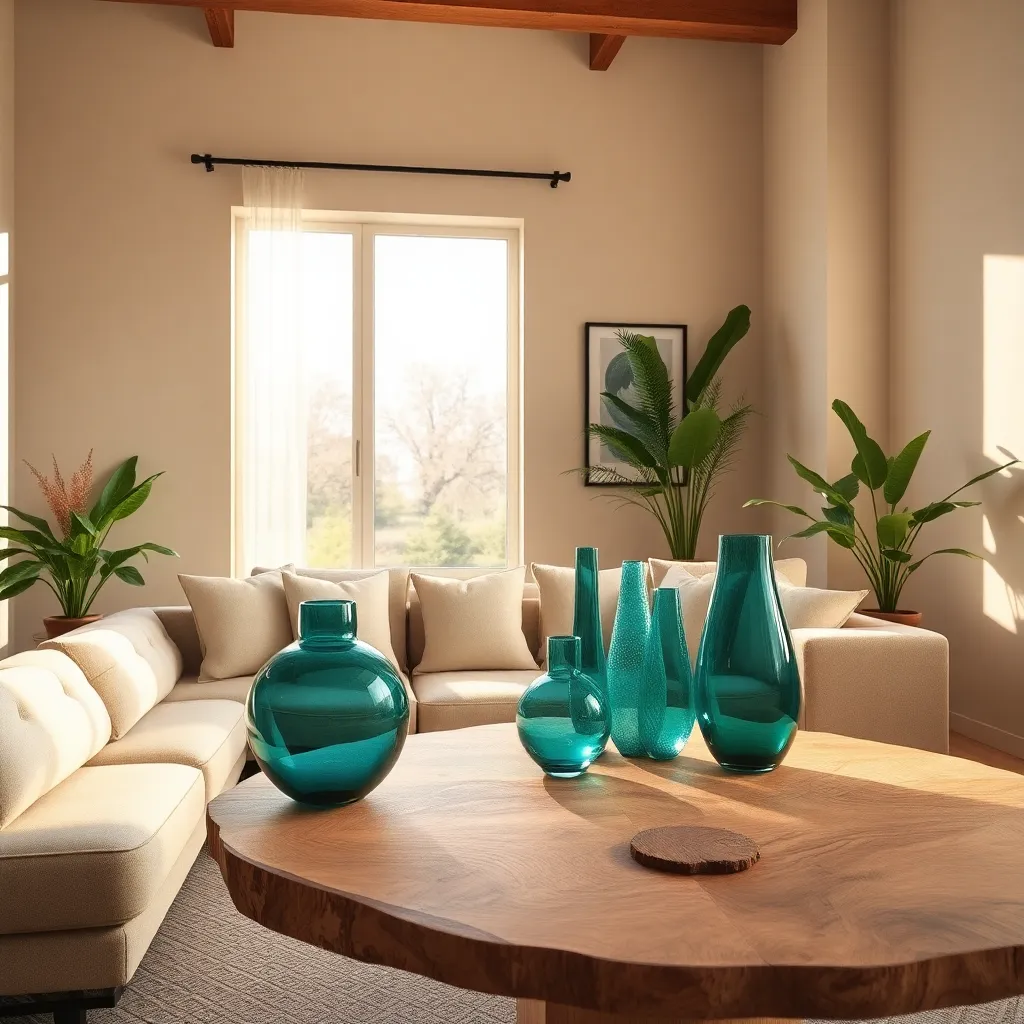
Recycled glass accents are a stunning and sustainable way to elevate your home decor. Begin by incorporating items such as vases, bowls, and decorative trays that are crafted from recycled glass, bringing a touch of eco-friendly elegance to your space.
Consider the placement of these accents to maximize their impact. For instance, a recycled glass vase filled with fresh flowers can become a striking centerpiece on your dining table or a statement piece on a mantel.
To create a cohesive look, pair recycled glass with natural materials like wood or stone. This combination provides a beautiful contrast and enhances the texture and depth of your decor while maintaining a sustainable ethos.
Advanced decorators might explore custom recycled glass tiles for backsplashes or even tabletops. These bespoke pieces not only add unique charm but also serve as conversation starters, showcasing your commitment to sustainable living.
Use Low-VOC Paints and Finishes
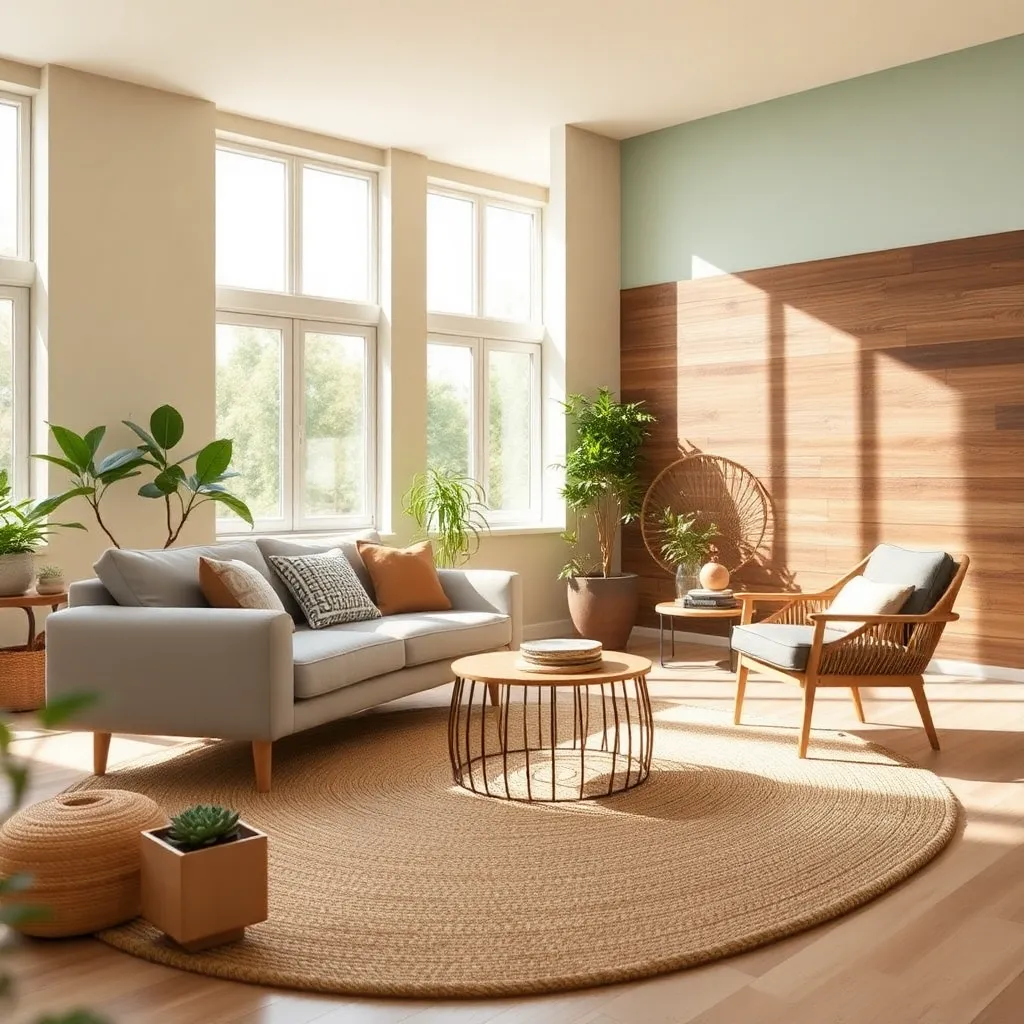
One of the most impactful ways to enhance your home’s sustainability is by using low-VOC paints and finishes. Volatile organic compounds (VOCs) are chemicals found in many traditional paints, which can negatively affect indoor air quality. Opting for low-VOC options not only benefits the environment but also ensures a healthier living space for you and your family.
When selecting paint, look for labels that explicitly mention low-VOC or zero-VOC formulations. This small switch can have a big impact, as these paints release fewer harmful chemicals into the air, reducing indoor pollution. Consider muted tones or soft pastels, which are currently trending and add a calm, serene vibe to any room.
For those more experienced in home decor, experimenting with low-VOC finishes on furniture can be a rewarding project. Sanding down an old piece and re-coating it with a low-VOC finish can breathe new life into it, all while keeping your eco-footprint low. Try pairing refinished pieces with natural fabrics like cotton or linen for a cohesive, environmentally friendly look.
Incorporating low-VOC products doesn’t mean sacrificing style or color. Many brands now offer a wide range of shades and finishes to suit any interior design scheme. Mix and match complementary colors to create a dynamic space that reflects your personal taste while keeping sustainability in mind.
Select Bamboo Flooring Options
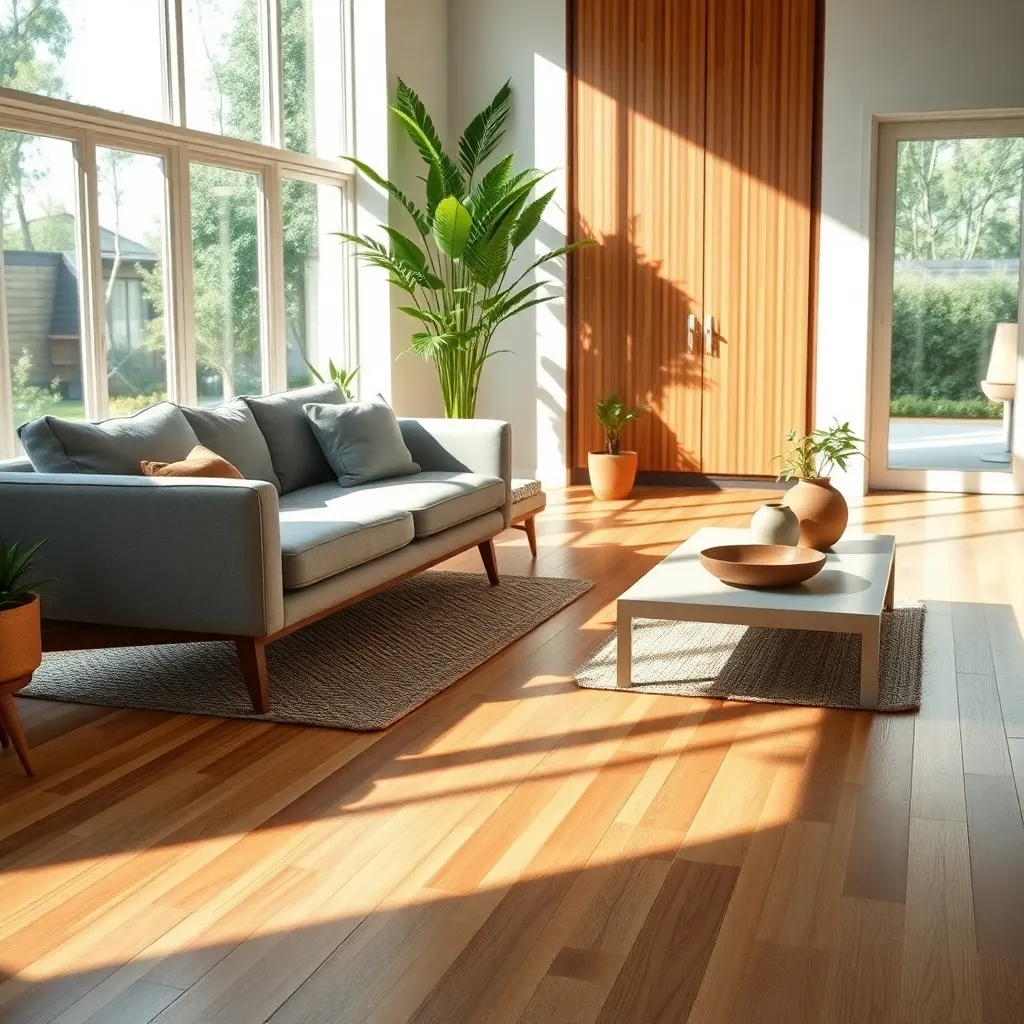
To continue your journey towards a sustainable home, consider incorporating bamboo flooring. Bamboo is a renewable resource that grows faster than traditional hardwoods, making it an eco-friendly flooring option. It’s not only sustainable but also stylish, providing a sleek and modern look that complements a variety of interior designs.
When selecting bamboo flooring, choose from options like strand-woven, horizontal, or vertical bamboo to suit your design aesthetic. Strand-woven bamboo is particularly durable, making it an excellent choice for high-traffic areas like the living room or kitchen. For a more traditional look, horizontal bamboo offers a natural grain pattern that adds warmth and texture to your space.
Bamboo floors come in a range of colors, from natural blonde tones to darker, coffee-colored finishes. Pairing light bamboo flooring with white walls and minimalistic furniture can create a bright, airy environment. Conversely, darker bamboo shades can be used to enhance a cozy, intimate setting when combined with rich, bold-colored furnishings.
For those experienced in home decor, consider experimenting with mixed-width planks to add visual interest and dimension to your flooring. Bamboo is not only practical but also versatile, able to be installed in various patterns such as herringbone or chevron. By choosing bamboo, you’re investing in a flooring option that is both beautiful and beneficial for the planet.
Install Energy-Efficient Lighting
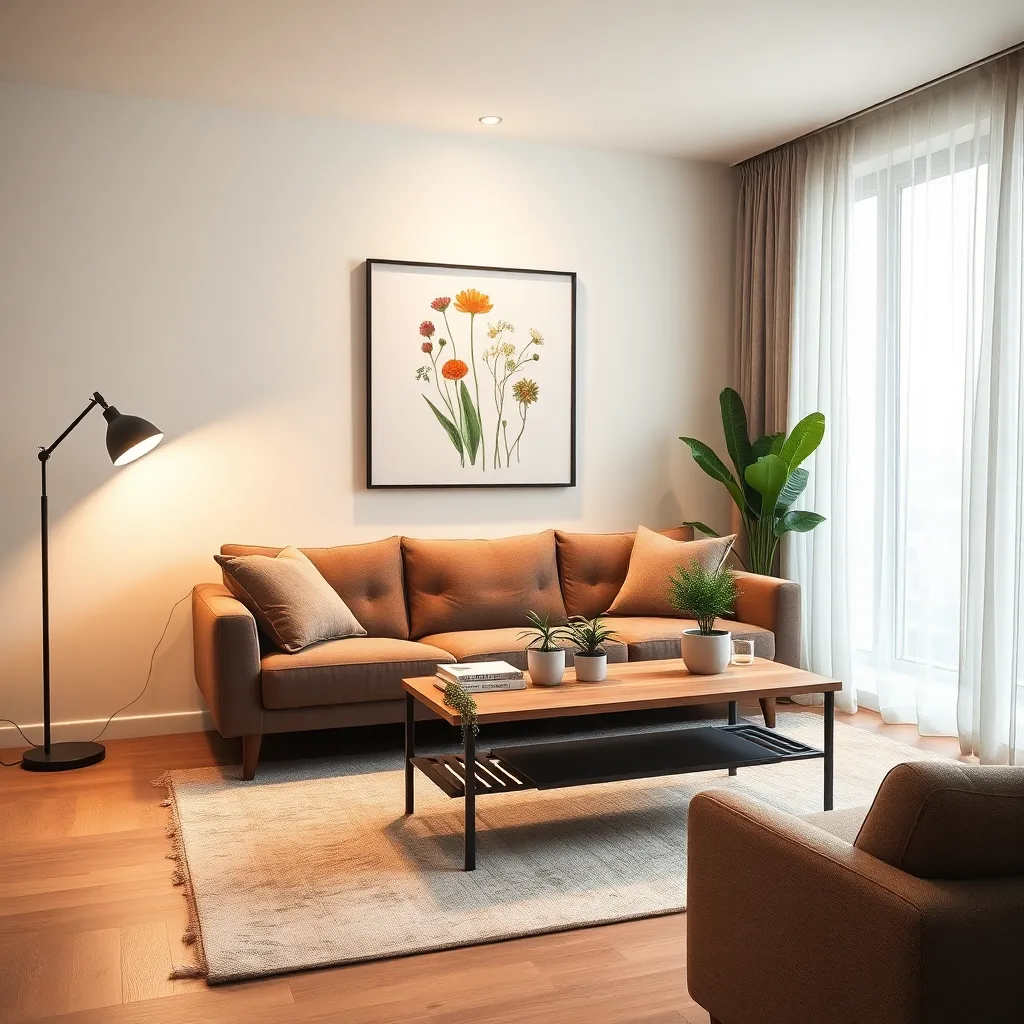
Integrating energy-efficient lighting into your home not only reduces your carbon footprint but also lowers your electricity bills. Start by replacing traditional incandescent bulbs with LED or CFL bulbs, which last longer and consume less energy.
Consider installing dimmer switches to control the intensity of your lighting and create mood-appropriate atmospheres in any room. This technique not only saves energy but also allows you to adjust lighting to suit different activities, enhancing your space’s versatility.
For spaces that benefit from natural light, such as living rooms or kitchens, use light-colored paint and reflective surfaces to maximize the effect. Strategically placing mirrors opposite windows can further amplify light, reducing the need for artificial lighting during the day.
Advanced decorators might explore smart lighting systems that can be controlled via smartphone apps or voice assistants. These systems allow for scheduling and automation, ensuring lights are only on when needed, thus optimizing energy use.
Decorate with Potted Indoor Plants
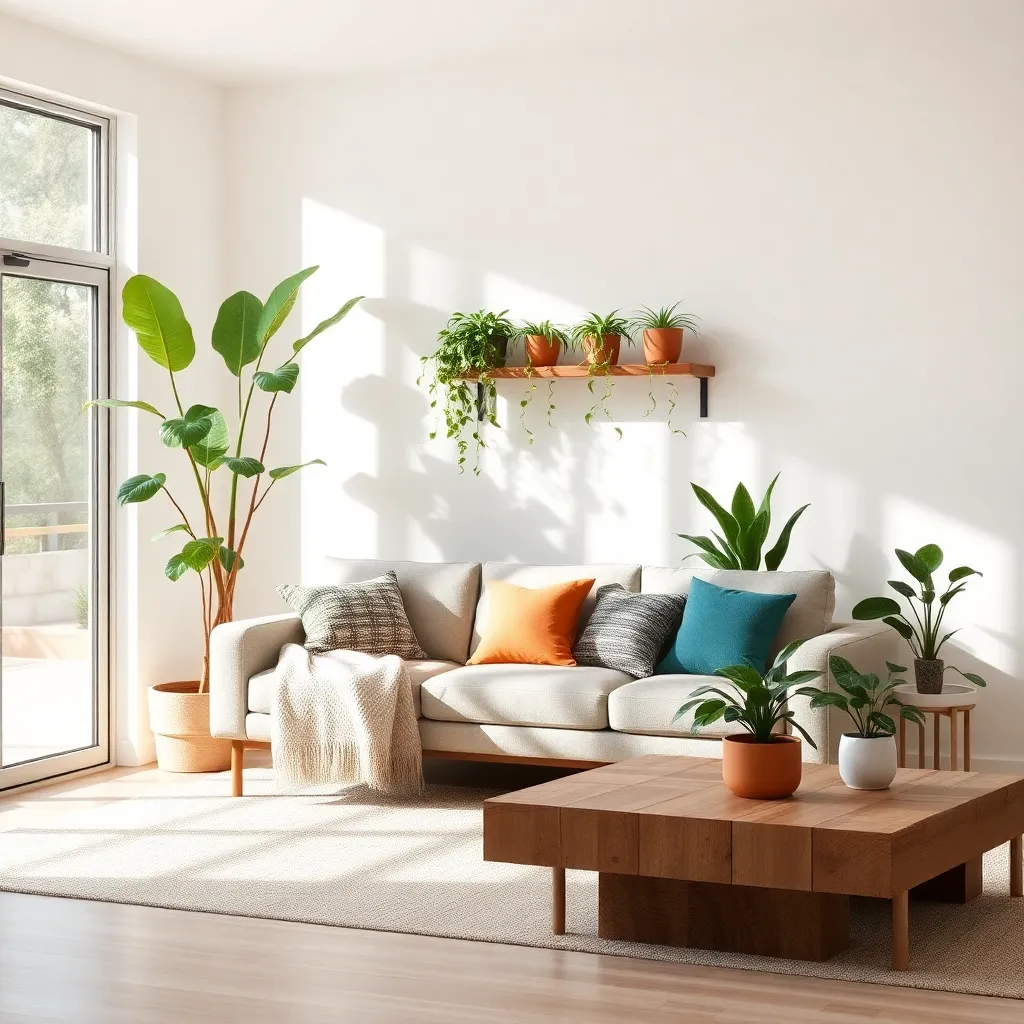
Incorporating potted indoor plants into your decor is a fantastic way to add both life and sustainability to your home. Begin by selecting plants that thrive in indoor environments, such as the low-maintenance snake plant or the visually striking fiddle leaf fig.
Placement is key to maximizing the impact of your indoor greenery. Consider arranging larger plants in corners to fill empty spaces, while smaller plants can be grouped on shelves or tabletops for a cohesive look.
When selecting pots, choose materials that complement your existing decor. Terracotta pots add a rustic touch, while sleek ceramic pots can offer a modern appeal; just ensure they have good drainage to keep your plants healthy.
For an advanced touch, experiment with varying plant heights and textures to create visual interest. Combine trailing plants, like pothos, with upright varieties to add depth and dimension to your space.
Repurpose Vintage Decor Pieces
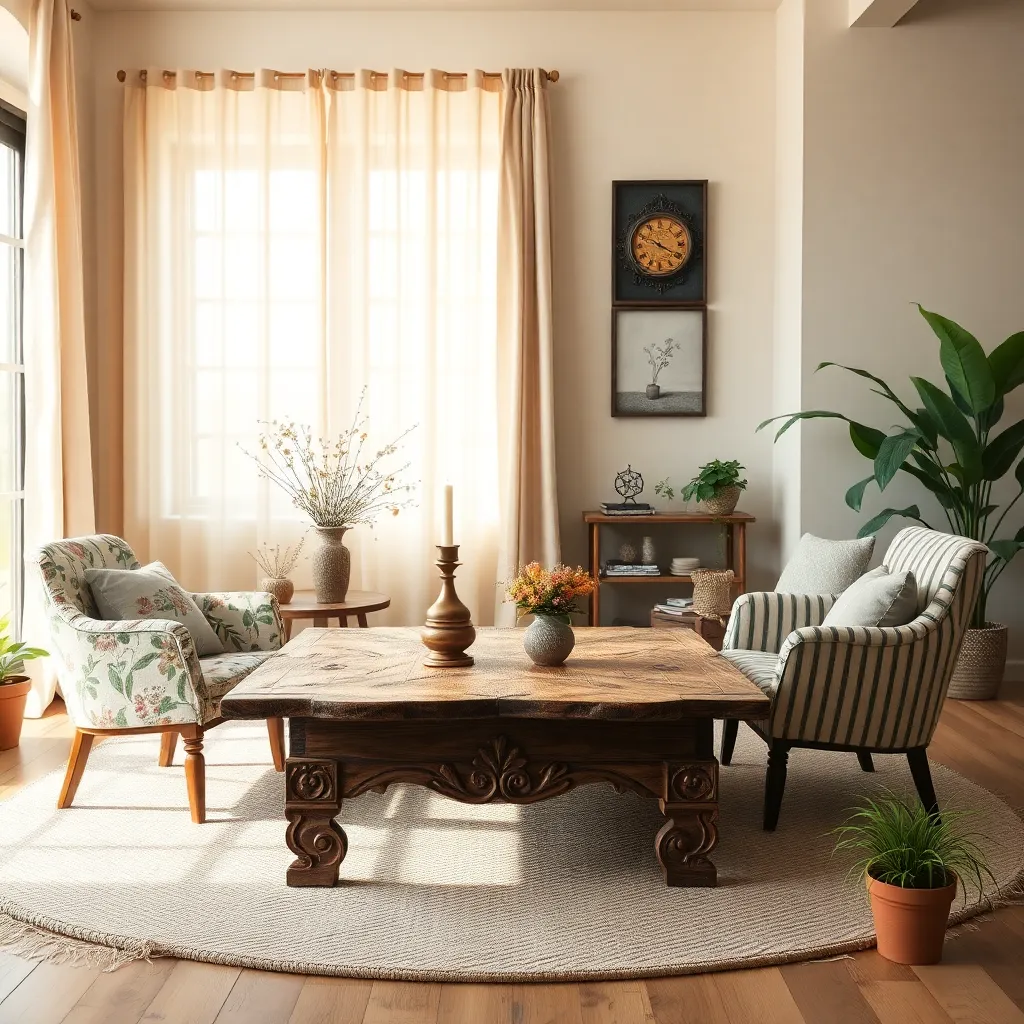
Incorporating vintage decor pieces into your home not only adds character but is also an eco-friendly choice. Start by exploring second-hand stores, flea markets, or online marketplaces to find unique items that speak to your personal style.
When selecting vintage furniture, consider its size and functionality within your space. A vintage sideboard can double as a living room console or a unique bathroom vanity, offering both style and practicality.
For a cohesive look, mix vintage items with modern pieces by focusing on complementary colors and textures. Pair a mid-century modern chair with a contemporary sofa, using throw pillows or a rug to tie the styles together.
Experiment with placement to highlight the charm of your vintage finds. Hang a retro mirror in a hallway to create the illusion of space, or use antique frames to group family photos for a personalized gallery wall.
Adopt a Minimalist Design Approach
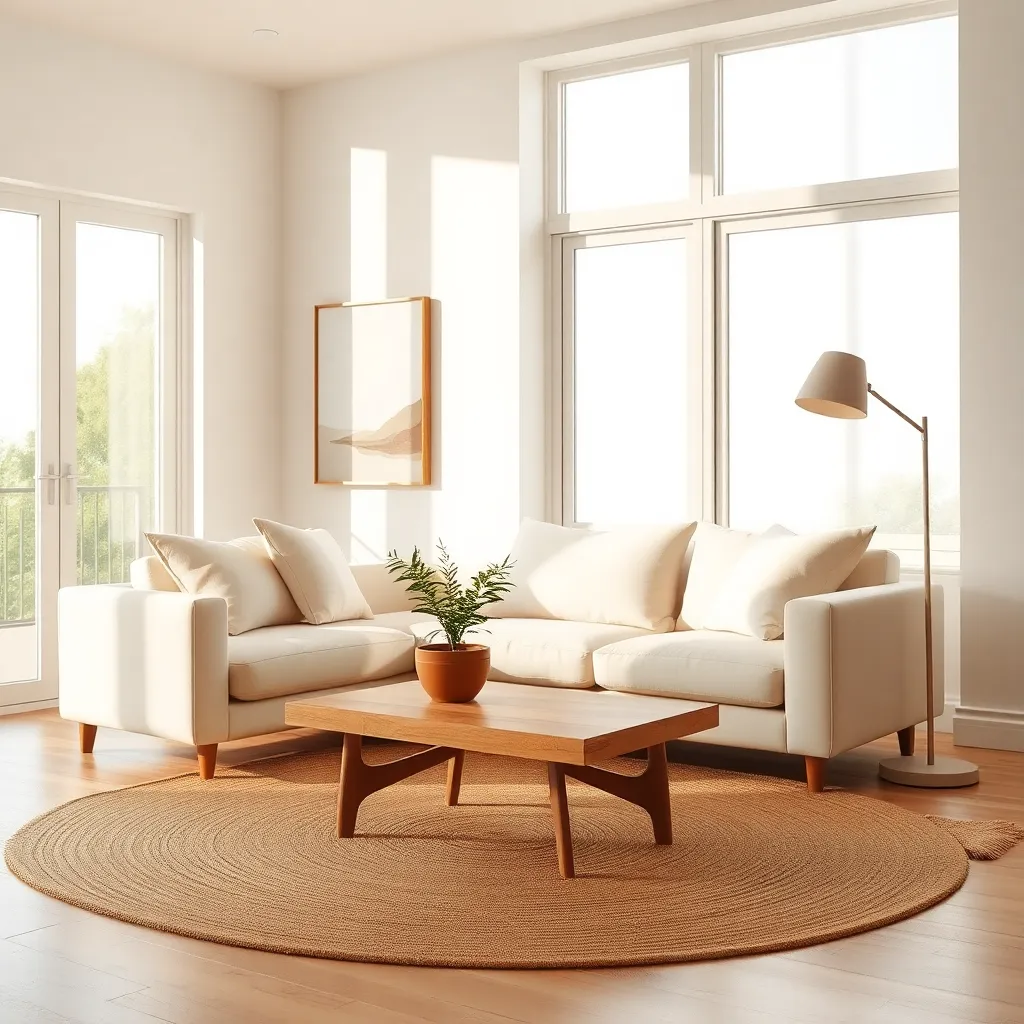
Embracing a minimalist design approach can significantly reduce clutter while enhancing the aesthetic appeal of your home. Start by selecting furniture that serves multiple purposes, such as a sofa bed or a dining table with storage drawers, to maximize space without sacrificing functionality.
Consider using a neutral color palette, which includes shades like white, beige, and soft grays, to create a sense of calm and openness. These colors not only promote a serene environment but also make it easier to mix and match textures and materials, such as a woolen throw on a sleek leather chair.
Incorporate natural materials like wood, stone, and cotton to bring warmth and texture into the space. Opt for sustainably sourced or reclaimed wood for your furniture pieces to align with eco-friendly practices while adding character to your minimalist décor.
Place furniture strategically to maintain a balance between open space and functionality. For instance, position a low-profile sofa in the center of a room to define the living area without overpowering it, and use floating shelves to keep items off the floor while maintaining a clean look.
Conclusion: Growing Success with These Plants
In exploring sustainable home decor, we uncovered nine meaningful ways to enrich both our living spaces and relationships. From integrating natural elements that promote tranquility to choosing eco-friendly materials that reflect mutual respect for our planet, each idea strengthens our connection with loved ones. Repurposing cherished items fosters creativity and teamwork, while opting for timeless, quality pieces encourages enduring bonds. Embracing minimalism invites peace and clarity, and sourcing locally nurtures community ties. Incorporating personal stories into decor celebrates shared history, and adopting energy-efficient solutions demonstrates care for future generations. Lastly, creating intentional spaces cultivates mindfulness and togetherness.
To put these ideas into practice, start by selecting one room and implementing a small, sustainable change, like introducing a plant or upcycling an old item together. This small step can ignite a journey towards a harmonious home and relationship. Remember, each change is a step toward a more connected and fulfilling life.
Bookmark this article to revisit these insights and keep your relationship thriving. As you weave sustainability into your home and relationship, you pave the way for a future filled with love, respect, and shared purpose. Together, every small action becomes a building block for lasting success.
